Research Using SASB Standards
The following research references or relates to SASB Standards. If you’re interested in publishing research related to SASB Standards and would like to receive the Standards, materiality map, or other associated information in Excel form, please contact us.

Casey Clark, CFA and Harshad Lalit, Ph. D., Rockefeller Capital Management, ESG Improvers: An Alpha Enhancing Factor (September 2020)
This paper discusses the Rockefeller ESG Improvers Score™ (REIS), a score that ranks a company’s improvement in performance on material ESG issues relative to industry peers., which “which was developed in collaboration with our equity and ESG analysts and based on initial guidance from SASB.”

Consolandi, Costanza and Eccles, Robert G. and Gabbi, Giampaolo, How Material is a Material Issue? Stock Returns and the Financial Relevance and Financial Intensity of ESG Materiality (April 2020)
“This paper investigates the role of the intensity and relevance of ESG materiality in equity returns. Adopting the classifications of materiality provided by the Sustainability Accounting Standards Board (SASB), the paper introduces the concept of the financial relevance and financial intensity of ESG materiality in order to estimate how it explains equity returns.”
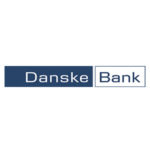
Rami Hakola, Jesper Neergaard Poll, and Jonas Vannefors, Danske Bank, In Search of Quality ESG Data: An Investment View on Corporate Sustainability Disclosures (May 2020)
In this paper, Danske Bank uses the SASB standards and SASB Materiality Map to analyse the sustainability disclosures of the 100 largest listed Nordic companies’ sustainability disclosures and its usability in our investment processes. Danske Bank shares its “research findings and our four priority areas to promote and support companies in their efforts to provide standardised ESG disclosures that we can use in our investment research and decision-making.”
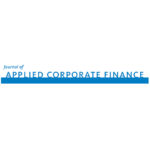
Cristiano Busco, Costanza Consolandi, Robert G. Eccles and Elena Sofra, A Preliminary Analysis of SASB Reporting: Disclosure Topics, Financial Relevance, and the Financial Intensity of ESG Materiality (March 2020)
This paper analyzes the quality of reporting resulting from companies that used SASB standards in their 2019 reports, finding that “while the number of companies reporting according to SASB’s standards is still small, our results are encouraging, showing, on average, good to very good quality of reporting.”

Do sustainable banks outperform?, Global Alliance on Banking for Values, European Investment Bank, and Deloitte (2020)
Using the SASB standard for Commercial Banks and SASB definition of materiality, this research evaluated public data on 100 banks. “In analysing their stock returns from 2007 to 2017, we determined that those banks that consistently scored high on material ESG issues delivered higher risk‑adjusted returns compared to those banks that performed poorly on the same issues, while the opposite was found for immaterial ESG issues. These results suggest that a focus on material sustainability issues is likely to coincide with enhanced financial returns.”

Witold J. Henisz and James McGlinch, Wharton School, University of Pennsylvania, ESG, Material Credit Events, and Credit Risk (Journal of Applied Corporate Finance, July 2, 2019).
The study “ESG, Material Credit Events, and Credit Risk” by Professor Witold J. Henisz and Doctoral Student James McGlinch of the University of Pennsylvania’s Wharton School published in the Journal of Applied Corporate Finance illustrates the connection between ESG performance and credit risk. “Our study is the first large-sample empirical study of the mechanisms that link ESG performance to credit risk, said Henisz, “We found that Truvalue Labs’ ESG scores capture timely and material events such as regulatory inquiries, investigations and lawsuits, which are correlated with credit risk and the likelihood of default.
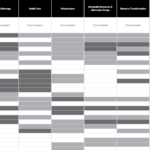
Mozaffar Khan, George Serafeim and Aaron Yoon, Corporate Sustainability: First Evidence on Materiality (Harvard Business School, March 9, 2015).
The authors mapped SASB’s Materiality Map® general issue categories to MSCI KLD data for 2,307 unique firms over 13,397 unique firm-years across six SICS® sectors. Using both calendar-time portfolio stock return regressions and firm-level panel regressions they find that firms with good ratings on SASB’s material sustainability issues significantly outperform firms with poor ratings on these issues. In contrast, firms with good ratings on immaterial sustainability issues (ESG issues not identified by SASB for a given industry) do not significantly outperform firms with poor ratings on the same issues. Lastly, they find that all else equal firms scoring at the top quintile on the material issues have higher future return-on-sales growth.
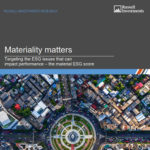
Russell Investments, Materiality matters: Targeting the ESG issues that can impact performance.
Russell Investments mapped SASB’s Materiality Map® general issue categories to Sustainalytics subcategories to adapt the Sustainalytics company ESG scores by calculating a new Material ESG score based on what SASB identifies for a company based on its SICS® industry. Using the new Material ESG score to analyse companies from 2011 to 2017, they find evidence that the Material ESG scores are better predictors of return compared to the original score, even after adjusting for known drivers of equity returns (such as factor exposures).
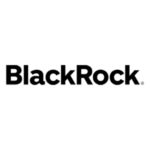
BlackRock, Sustainable investing: a ‘why not’ moment: environmental, social and governance investing insights. (May 2018)
BlackRock applied SASB’s Sustainable Industry Classification System® (SICS®) to the Russell 1000 Index and compared the results to the General Industry Classification System (GICS) across eight years of data. They found that (a) pairwise correlations between sectoral returns were lower than GICS and (b) pairwise correlations of excess returns of individual stocks within sectors were comparable to that of GICS.

QMA, Integration ESG in Portfolio Construction: An innovative data lens gives a wider view on sustainable investing. (July 2018)
QMA mapped SASB’s Materiality Map® general issue categories to Bloomberg ESG data from 2008 through 2015 for the Russell 3000 and S&P 500. After categorising companies as good, bad, or neutral, they provide evidence that analyzing companies using only SASB’s material ESG factors is preferable to analyzing companies based on all disclosed ESG information. Additionally, they used a procedure borrowed from pairs trading to assign companies to good or bad categories even if those companies weren’t disclosing much ESG information, which allowed them to expand the number of companies categorised as good or bad by over 200%.
